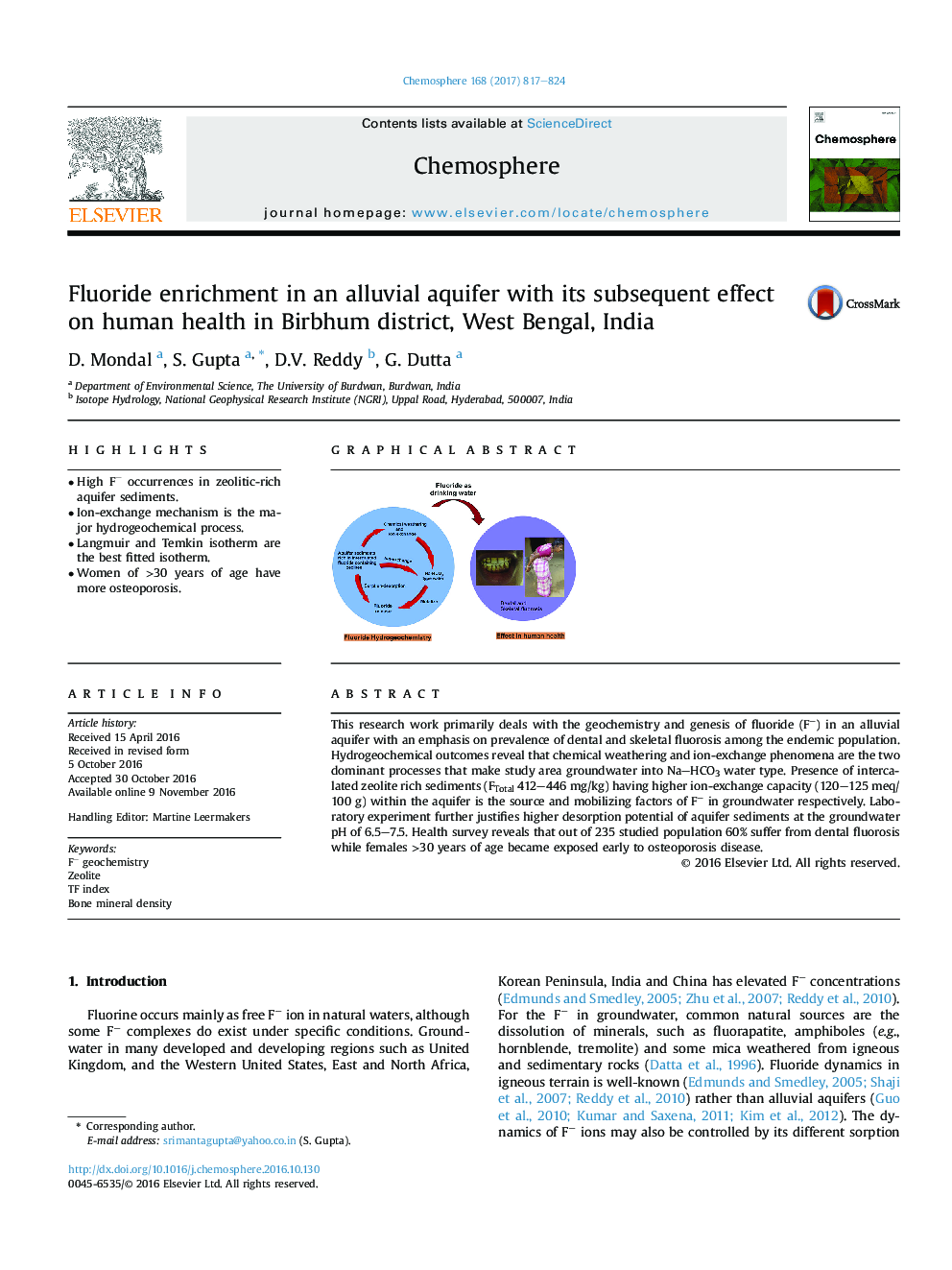| Article ID | Journal | Published Year | Pages | File Type |
|---|---|---|---|---|
| 5746619 | Chemosphere | 2017 | 8 Pages |
â¢High Fâ occurrences in zeolitic-rich aquifer sediments.â¢Ion-exchange mechanism is the major hydrogeochemical process.â¢Langmuir and Temkin isotherm are the best fitted isotherm.â¢Women of >30 years of age have more osteoporosis.
This research work primarily deals with the geochemistry and genesis of fluoride (Fâ) in an alluvial aquifer with an emphasis on prevalence of dental and skeletal fluorosis among the endemic population. Hydrogeochemical outcomes reveal that chemical weathering and ion-exchange phenomena are the two dominant processes that make study area groundwater into NaHCO3 water type. Presence of intercalated zeolite rich sediments (FTotal 412-446Â mg/kg) having higher ion-exchange capacity (120-125 meq/100Â g) within the aquifer is the source and mobilizing factors of Fâ in groundwater respectively. Laboratory experiment further justifies higher desorption potential of aquifer sediments at the groundwater pH of 6.5-7.5. Health survey reveals that out of 235 studied population 60% suffer from dental fluorosis while females >30 years of age became exposed early to osteoporosis disease.
Graphical abstractDownload high-res image (214KB)Download full-size image
